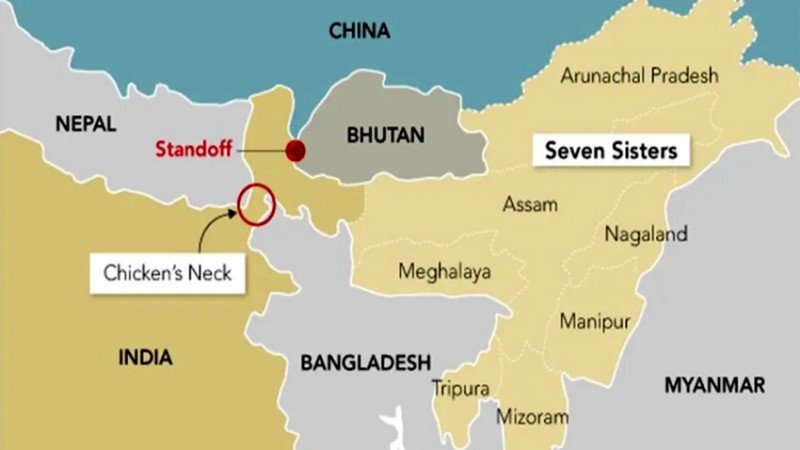India deploys heavy weaponry in ‘Chicken’s Neck’ amid strategic tensions
Published: 06 April 2025, 1:21:56

India has significantly bolstered its military presence in the strategically vital Siliguri Corridor—popularly known as the ‘Chicken’s Neck’—by deploying advanced weaponry, including the S-400 surface-to-air missile system.
This move comes amid increasing geopolitical tensions and follows Prime Minister Narendra Modi’s recent regional visits to Thailand and Sri Lanka.
According to India Today, the Indian military has heightened security measures in the narrow corridor of land in West Bengal, which connects the country’s northeastern states to the rest of India. The area shares borders with Nepal, Bhutan, Bangladesh, and China, making it a critical point of national security.
India’s deployment includes Rafale fighter jets at the Hashimara Air Base, a regiment of BrahMos supersonic cruise missiles, and air defense systems such as the MR-SAM and Akash. The Indian Army’s Trishakti Corps, headquartered nearby in Sukna, leads the region’s defense, conducting live-fire exercises with T-90 tanks to ensure combat readiness.
The move comes in the wake of comments made by Dr. Muhammad Yunus, head of Bangladesh’s interim government, during his recent visit to China. His remarks on potential Chinese investment in India’s northeast and in Bangladesh have reportedly raised alarms in New Delhi, prompting a rapid military response in the vulnerable Siliguri Corridor.
Indian military officials have emphasized their intention to transform the Chicken’s Neck from a perceived vulnerability into one of the country’s most fortified military zones. General Anil Chauhan, Chief of Defence Staff, recently visited northern Bengal to review operational preparedness and held high-level discussions with field commanders on strengthening India’s strategic posture.
This military alertness also follows past incidents, including the 2017 Doklam standoff, where Chinese attempts to construct a road near Bhutan raised the risk of direct access to the Siliguri Corridor. The episode underscored the corridor’s significance and vulnerability, spurring India to invest heavily in defense infrastructure in the region.
Security analysts suggest that China’s growing ties with Bangladesh—especially through the Belt and Road Initiative—and political developments in Dhaka are being closely monitored by Indian authorities. They view increased Chinese influence in the region as a potential threat to India’s northeastern access and overall strategic balance.
Indian forces remain on high alert, with a layered defense mechanism now in place to neutralize any potential threats—airborne or otherwise—across the critical corridor.





